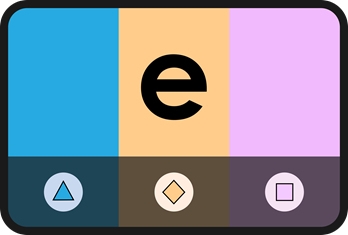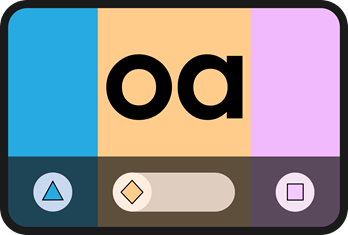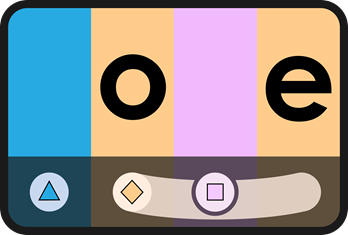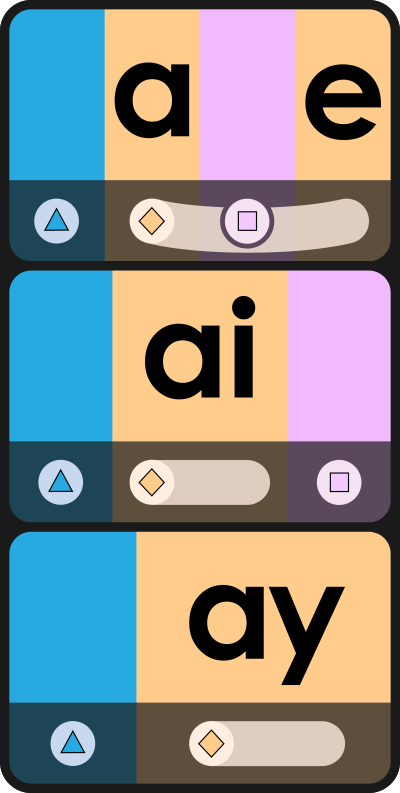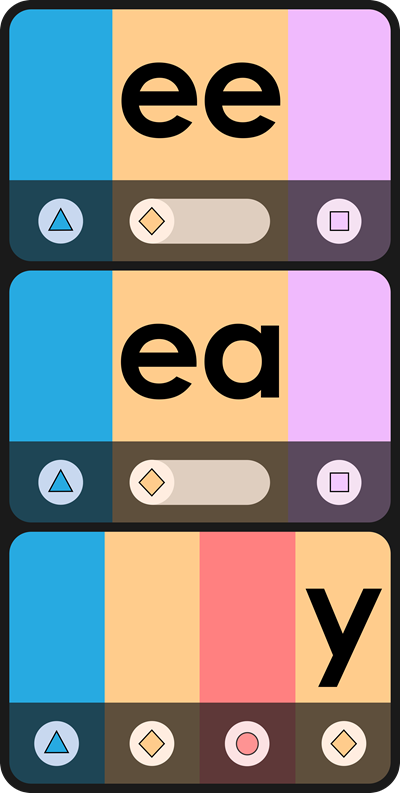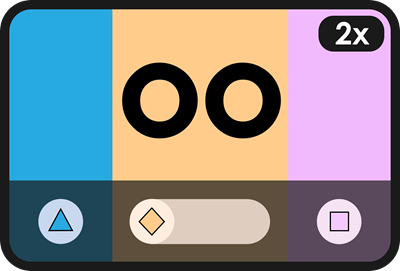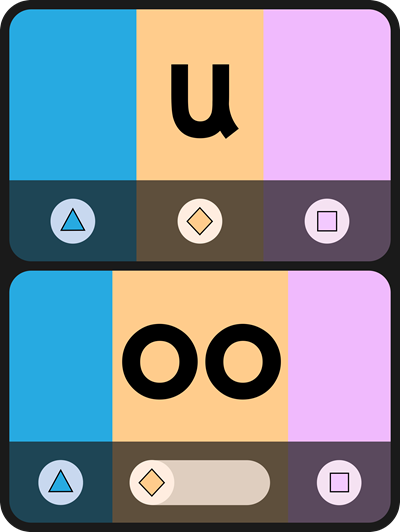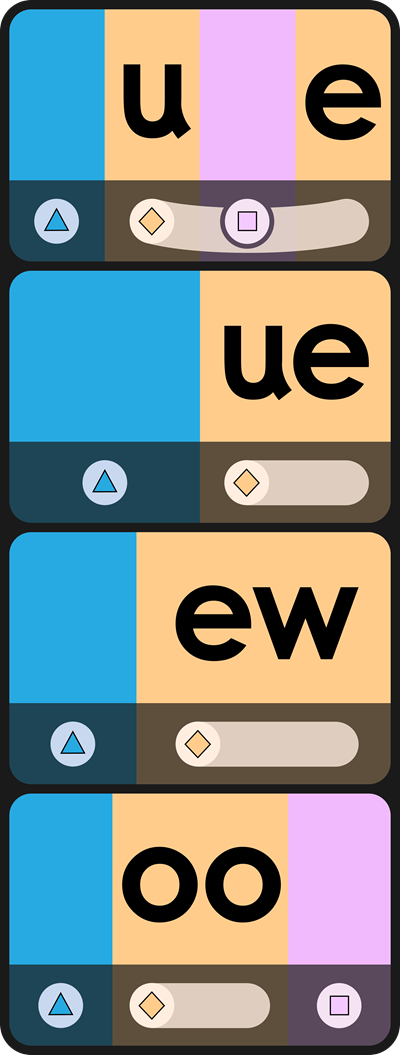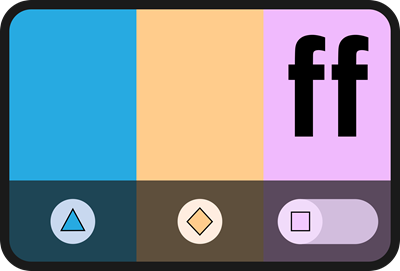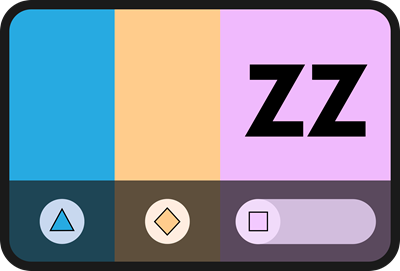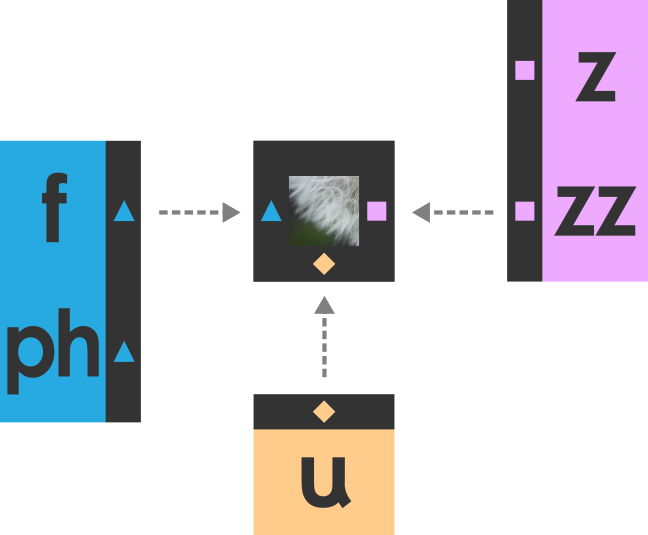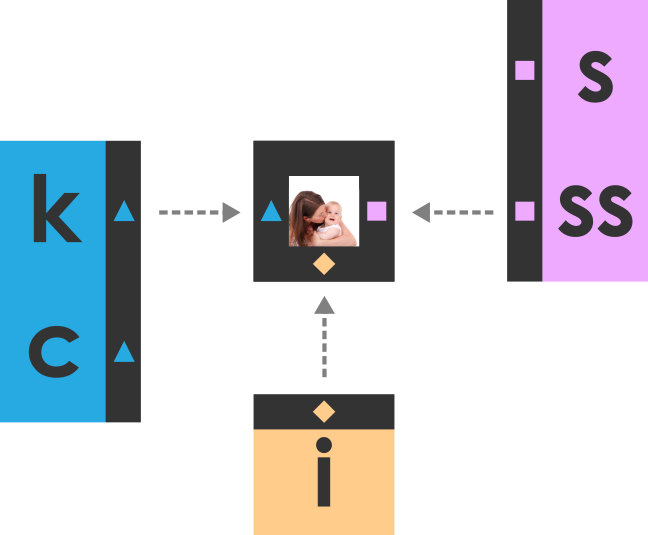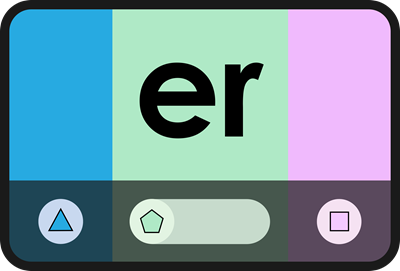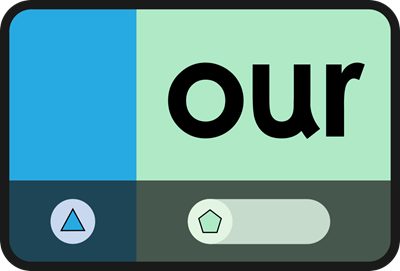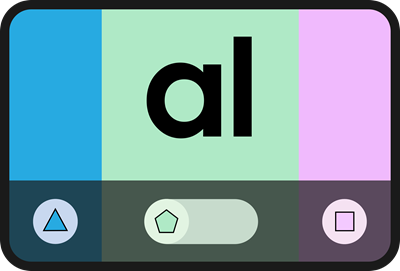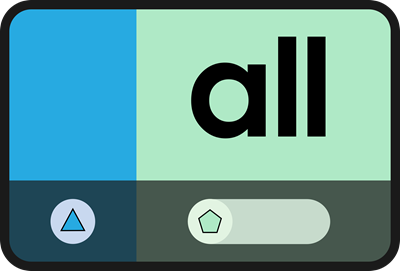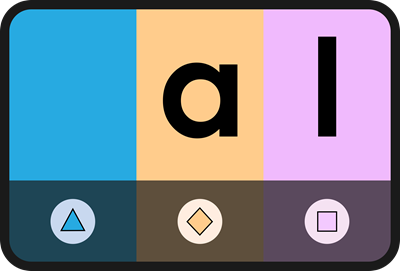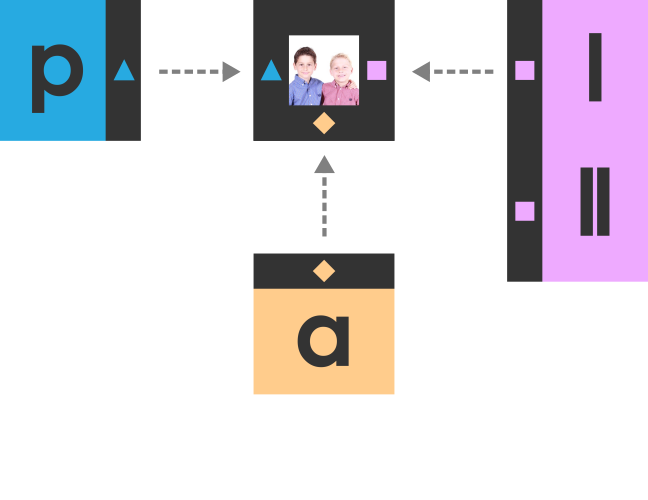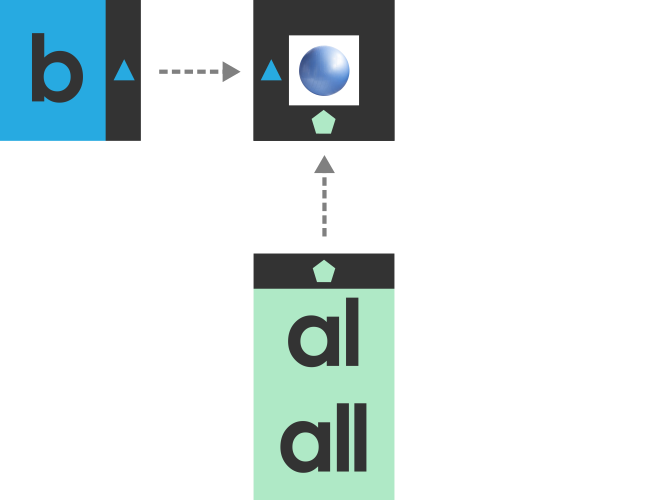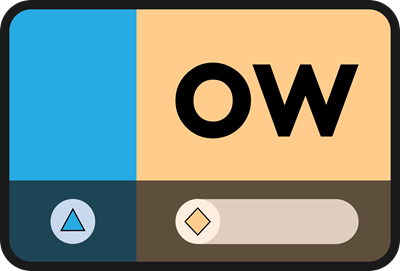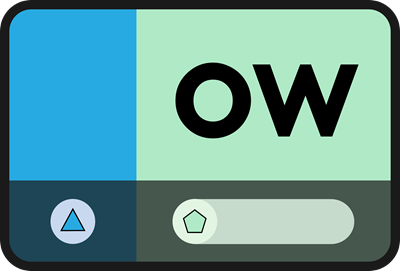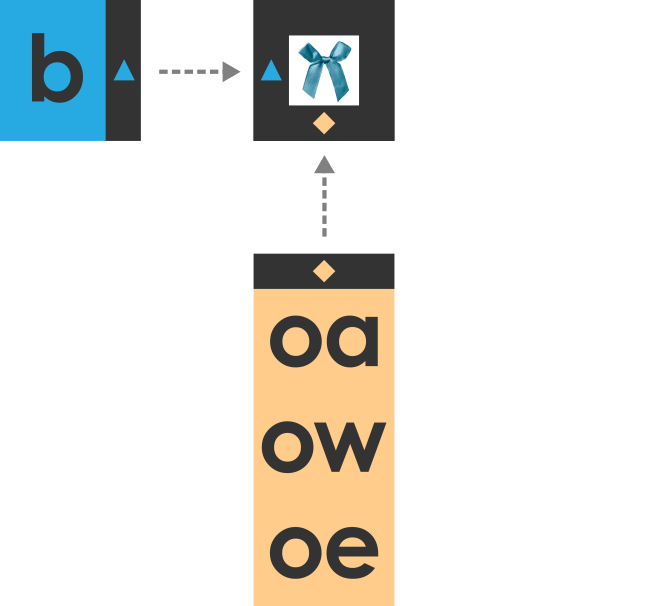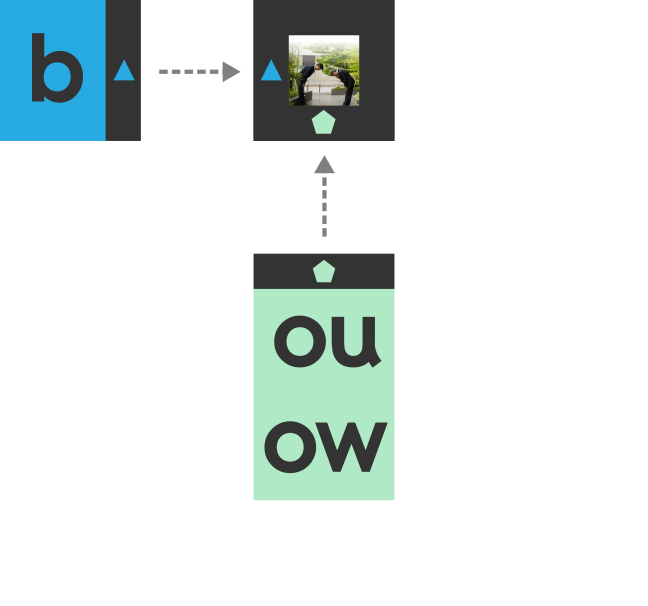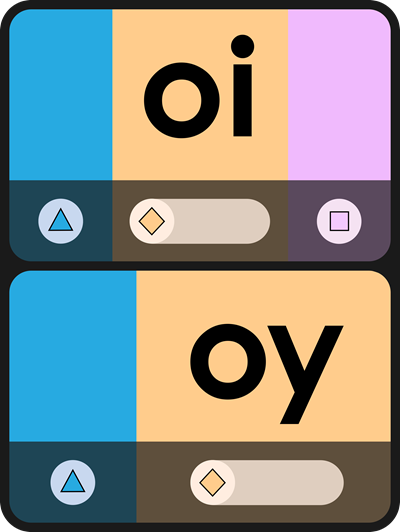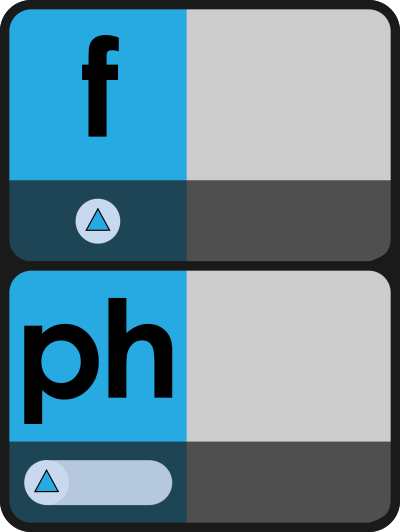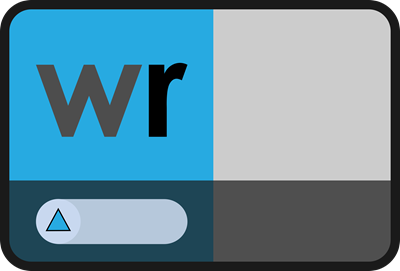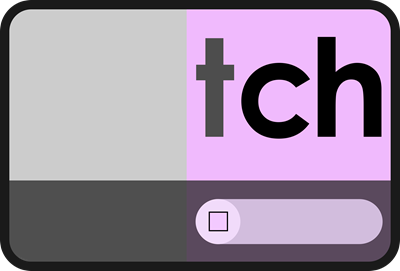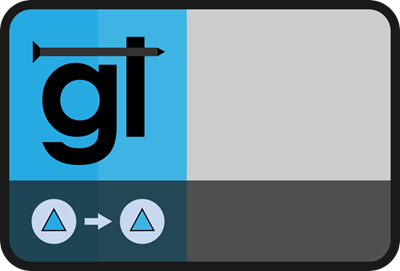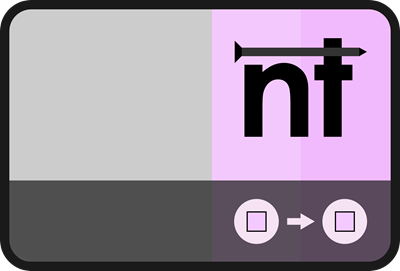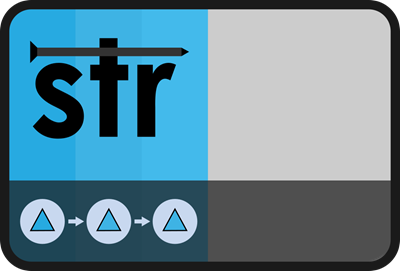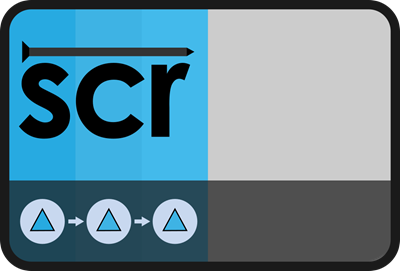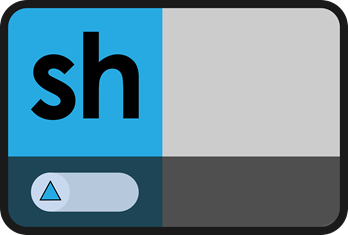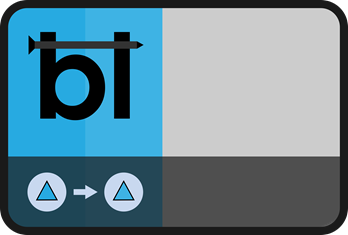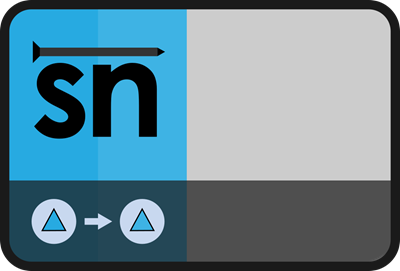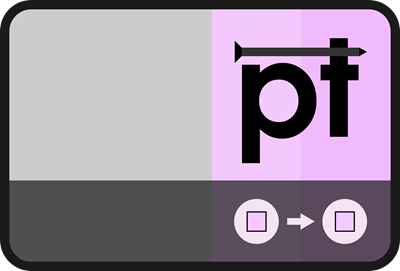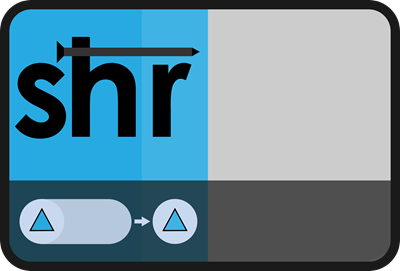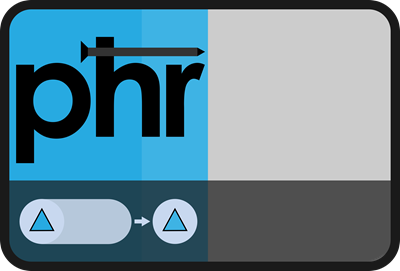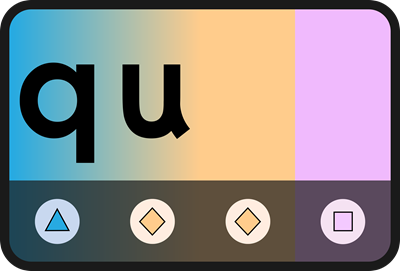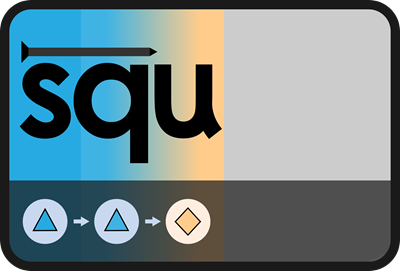How To Use These Materials
Phonics Rule Cards are excellent visual tools for demonstrating various phonics rules. They do not need to be used as a complete set. They can be used at a teacher's own discretion.
For example, a teacher can simply use the following card to teach the phonics rule for 'short a' vowel sounds and wait till another lesson to use other cards to teach the phonics rules for 'short e' and 'short i' vowel sounds.
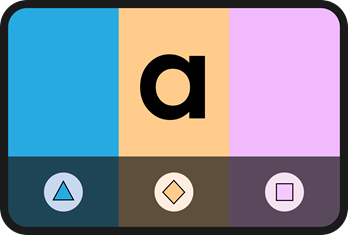
The following sections provide a complete list of all of the rules that these cards can be used to teach.
Teach Short Vowel Sounds
Our Phonics Rule Cards provide a great way to teach short vowel sounds. Rather than just present the characters for letters like 'a' or 'o' without helpful context, the design of the cards, communicates that a beginning consonant and ending consonant would normally come before and after any short vowel in a word.
|
Short 'a' CVC Vowel Card
|
Short 'e' CVC Vowel Card
|
Using these rule cards can be supplemented by using CVC Phonics Word Cards that show many actual examples of words that follow each of the short vowel rules. This works best if vocabulary words that students have already learned are used as phonics example words.
Teach Long Vowel Sounds
English long vowel sounds can be hard to teach, because when it comes to spelling, they take many different forms. Our Phonics Rule Cards are perfect for helping with this challenge, because they come in two types.
The first type, are individual cards for each different (standard) spelling of long vowel sounds.
|
A Long 'o' Vowel Card
|
Magic 'e' Long 'o' Vowel Card
|
The second type, are special vertical cards that combine all of the potential spellings for long vowel sounds into one card that displays them all simultaneously.
|
All Long 'a' Vowel Card
|
All Long 'e' Vowel Card
|
Teach The Two 'oo' Vowel sounds
It can be confusing to young learners that the letter combination 'oo' can make two different sounds, depending on the word that the letters appear in. The following cards will help explain the rule.
|
'oo' Vowel Card
|
Teachers can use the card above to communicate that this letter combination makes two different sounds.
Then, with the two cards below, they can demonstrate and discuss the two sounds (and other letters/letter-combinations that produce the same sounds).
|
Horseshoe 'u' Vowel Card
|
Long 'u' Vowel Card
|
Demonstrate Double Letter Spelling Conventions
Some words end in a double letter pair that is pronounced exactly the same as just one of the two letters would be. The Phonics Rule Cards will make this easier to explain to students.
|
'ff' Card
|
'zz' Card
|
These cards will be especially useful if used alongside our printable Phonics Matching Tiles play-based learning system.
|
Phonics Matching Tiles for 'fuzz'
|
Phonics Matching Tiles for 'kiss'
|
The phonics tiles for the 's' ending consonant sounds also helps students understand that both 's' and 'ss' represent that same sound. The 'z' ending consonant tile does the same for 'zz.'
Introduce R-Colored Vowels
English features a number of vowels and consonants that work together to form unique phonics sound combinations. Most of these are R-Colored Vowels. To help students understand the uniqueness of vowel-consonant sound combinations, our system gives them their own color: green.
|
'er' Card
|
'our' Card
|
To make teaching a lesson about this topic even easier, there's also a card available that displays all three spellings of the most common r-colored sound.
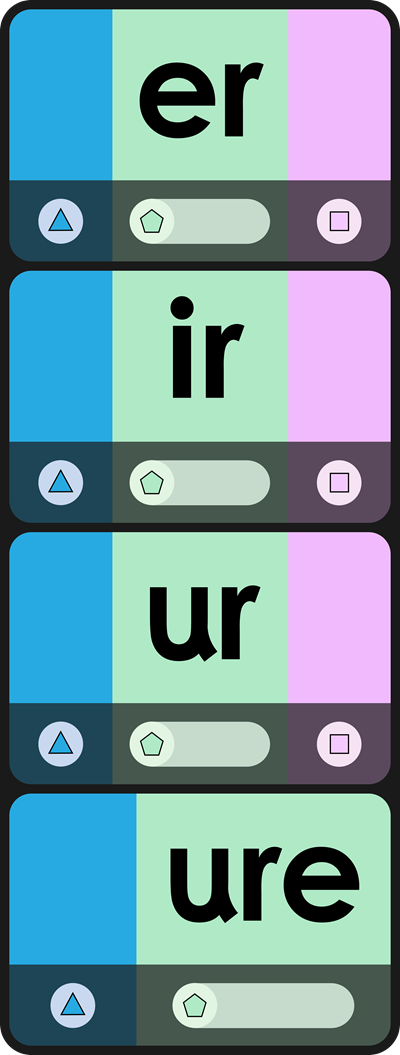
This card makes it super easy to communicate to young learners than all three of these spellings produce the same phonetic sound.
Differentiate Between the Two Pronounciations of 'al'
In addition to the r-colored vowels featured above, there are a couple other special vowel-consonant combinations that frequently appear in English. One example is the 'al' or 'all' combination found in words like 'ball' and 'salt.'
The following two cards demonstrate the rule for those two words (among others, like 'call,' 'balm,' and 'wall').
|
'al' Card
|
'all' Card
|
However, these cards can also be used to help students differentiate between 'al' pronounced as 'ol' and al' pronounced as 'al.' And the pentagon
In the cards below, the first card has 'a' and 'l' separated into their own orange and violet colored zones. This helps communicate that the 'a' produces a normal 'short a' sound and the 'l' produces its normal consonant sound.
Additionally, the use of a different sound button for each letter (an orange diamond for the 'a' and a violet square for the 'l') help mkae it clear that there are separate, independent sounds without a special phonics relationship.
|
'al' Card for Words Like 'pal'
|
'al' Card for Words Like 'salt'
|
On the second card, the green zone helps communicate that 'al' is a special situation with its own rules. The use of the green pentagon "finger-slider" will help teachers show students that 'al' has a special relationship when used in some words.
Note: While it isn't phonetically true that 'al' in 'al' is a single phonetic/phonics sound, we believe that students will have an easier time learning to read if they understand 'al' in words like 'salt' as being a special combination.
Teaching this rule is an excellent opportunity to use these Phonics Rule Cards in combination with our Phonics Matching Tiles. The tiles can used to demonstrate that sometimes 'al' sounds like 'al' and for other words, it sounds like 'ol.'
|
Phonics Matching Tiles for 'pal'
|
Phonics Matching Tiles for 'ball'
|
Using this system of color and shape coded symbols makes learning easier for students, because it allows them to anchor their learning to helpful visuals.
Differentiate Between the Two Pronounciations of 'ow'
Another example of a letter vowel-consonant combination having two different pronounciation is 'ow.'
In words like 'know' and 'now,' the two letters produce two different sounds. In 'know,' the 'ow' represents a 'long o' sound. In 'now,' it represents a unique (that is also sometimes spelled 'ou.'
|
'ow' in 'know' Card
|
'ow' in 'now' Card
|
Since the 'ou/ow' sound includes a some of the 'w' consonant sound, its rule card uses green.
This teaching point is another good opportunity to use our Phonics Matching Tiles to further develop students' understanding.
|
Phonics Matching Tiles for 'bow' (Noun)
|
Phonics Matching Tiles for 'bow' (Verb)
|
The combined use this page's Phonics Rule Cards and the available Phonics Matching Tiles will drive home the understanding that the letter combination 'ow' can represent two different phonics sounds. The use of the Phonics Matching Tiles will also help remind students about the other letter combinations that make the same sounds as the two different 'ow' pronunciations.
Show Multiple Spellings of the Same Sounds
Just like the vertical long vowel sound cards above, there are other phonics sounds in English that can be represented by more than on letter combination.
|
'oi' + 'oy' Card
|
'f' + 'ph' Card
|
The card for 'oi' + 'oy' above not only helps with communicating that both letter combinations represent the same sound, but also (with the placement of the blue, orange, and violet zones) that 'oi' is usually in the middle of word and 'oy' is usually at the end of words (with no more letters after the 'y.')
Teach Silent Letter Rules
One of the confusing quirks of the English spelling is that many words include silent letters that are not pronounced. Several Phonics Rule Cards are available for common silent letter combinations.
|
Silent 'w' Card
|
Silent 't' Card
|
On these cards, the silent letter in each letter combination is gray, rather than black, making it easy to communicate to young learners which letters are pronounced and which are not.
Teach 2-Letter Consonant Blends
These card have been carefully designed to make it as easy as possible to teach young learners about blends. Each two-letter blend features two Sound Buttons at the bottom. (For example, the two circles with blue trianges inside them under the letters 'g' and 'l' on the card below.)
This allows a teacher to point at each sound button one-at-a-time and pronounce each of the letters independently. Then, to demonstrate the blend, the teacher can run their finger along the arrow at the top (from left to right) and pronounce the two sounds as a blends.
|
'gl' Consonant Blend Card
|
'nt' Consonant Blend Card
|
This helps students better understand that consonant blends are a combination of two different consonants.
Teach 3-Letter Consonant Blends
Similarly, there are also cards that will help teach three-letter consonant blends.
|
'str' Consonant Blend Card
|
'scr' Consonant Blend Card
|
Just like with the two-letter consonant blend cards, these cards have an individual sound button for each of the three consonants that form the blend. This provides teachers with visualize to help emphasize each consonant sound one at a time, before pronouncing them as a combinated consonant blend.
Explain Consonant Digraphs Versus Consonant Blends
In English phonics, letters pairs can be used for two purposes:
- Blends, which are two distinct sounds blended together. For example, 'd' and 'r' can be blended to form 'dr.'
- Digraphs, which are single distinct sounds represented by two letters instead of one.
A lot of native English speakers get confused about the difference between blends and digraphs, so explaining it to a 5-year-old English second-language learner can be quite challenging!
Our Phonics Rule Cards make it much easier to explain, by providing clear visuals that communicate the difference.
|
'sh' Digraph Card
|
'bl' Blend Card
|
The digraph cards, for sounds like 'sh' or 'ch,' are designed to clearly communicate that there is only one sound being represented. This is illustrated by the fact that there is only one blue triangle on the card.
The blend cards, have two blue triangles, which a teacher can use to help them communicate that there are two sounds involved. The gray arrow on top of the two letters (such as the 'b' and the 'l' above), can then be used to help communicate that the two letters are to be blended together.
Teach Beginning Blends Versus Ending Blends
With exception of blends like 'st' and 'sk,' consonant blends in English are usually either beginning blends or ending blends. The blue/violet color coding (in addition to visual left-to-right position) make it easy to communicate to students the different between beginning and ending blends.
|
'sn' Beginning Blend Card
|
'pt' Beginning Blend Card
|
Teachers may find it helpful to affix our full collection of consonant blend Phonics Rule Cards to a wall in their classroom. This will make it easier for students to develop a complete understanding of which blends can occur in English words.
Explain Consonant Blends/Digraph Combinations
One of the most difficult types of English consonant blends to explain to students are three letter blends that actually only have two sounds -- one formed by a single letter consonant, and the other by a two letter digraph (that isn't a blend, despite having two letters).
We have Phonics Rule Cards that are perfect for explaining how these three letter combinations are pronouncated. With just two Sound Buttons below each three letter combination, it's easy for teachers to communicate to their students that there are only two sounds being combined.
|
'shr' Consonant Blend Card
|
'phr' Consonant Blend Card
|
For example, a teacher can use the wide (finger-slider) sound button below the 'sh' letters in 'shr' while verbalizing the sound that 'sh' makes and then touch the sound button below the 'r' as they independently pronounce the 'r' sound.
The teacher can then ask their students, "How many sounds are in 'shr?'" If their students are unsure, the teacher can then count the number of sound buttons with them to further clarify that there are two sounds that help form the 'shr' blend.
Communicate The Special Relationship Between 'q' and 'u'
Two Phonics Rule Cards are available that are specifically designed to help teachers highlight the special relation between 'q' and 'u.' The 'squ' card helps take that knowledge one step further by communicating how the 'sq' blend is (basically) always followed by a 'u.'
|
'qu' Phonics Rule Card
|
'squ' Phonics Rule Card
|
The first card is specifically designed to be used along side Phonics Word Cards like 'quit,' and 'queen.'
